Marketing leaders in B2B companies face a strange problem: they spend a lot of money on paid advertising and demand generation. However, many still find it hard to get real interest from their ideal customers.
The common methods like PPC (Pay-Per-Click) campaigns, LinkedIn ads, and email follow-up sequences aren’t working as well as before. Companies are paying more to get new customers, but the number of people buying isn’t growing.
However, some B2B companies stand out from the rest. They easily attract many potential customers who are actually interested in buying. What makes them different?
They have learned how to get their customers to spread the word about their business. When happy customers become strong supporters of a company, it creates authentic word-of-mouth marketing.
Paid campaigns can sometimes feel fake and pushy to people. But when someone recommends a product or service to their professional contacts, people tend to trust and believe these recommendations more.
This article will show you step-by-step ways that B2B companies can build genuine word-of-mouth on a large scale. We will look at real examples of companies that have done this well.
We will also use proven strategies to show you how to turn your current customers into effective marketers for your business. This can help your company grow steadily through referrals that are based on trust.
Understanding B2B Word-of-Mouth Dynamics
B2B decisions rarely happen through marketing efforts alone. Decision-makers go through layers of research, recommendations, and risk assessment before bringing on new vendors.
Your role goes beyond impressing a single buyer – you need to influence entire networks within your target audience.
The numbers show how potential customers make choices. When a positive word comes from colleagues, people pay attention. Nielsen found that 84% of consumers trust recommendations from their professional network above all else.
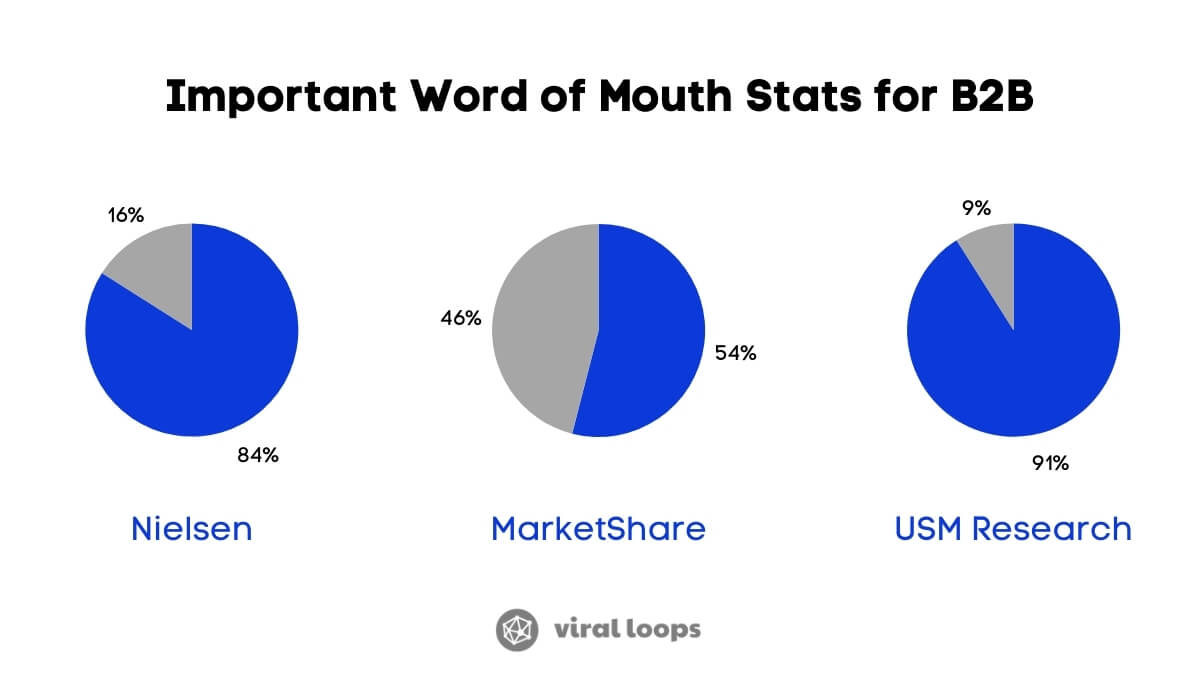
For B2B decisions, the impact is even stronger. USM research shows that 91% of B2B buyers make purchasing decisions based on peer recommendations. MarketShare’s analysis backs this up, showing word-of-mouth boosts effectiveness by 54%.
The B2B Decision-Making Process
B2B purchases don’t close after a single impressive pitch or presentation. Your potential clients have multiple decision-makers, each with their own concerns and priorities. These stakeholders need time to agree and reach a consensus.
A typical B2B purchase involves 6-10 decision-makers and can take anywhere from 3 months to 2 years. Trust becomes essential for every successful deal.
Professional networks play a crucial role in these decisions. Your prospects actively seek recommendations from peers who’ve faced similar challenges.
They ask questions in industry forums and reach out to trusted colleagues.
What Makes B2B Companies Talk-Worthy
Your marketing efforts only work if they connect with your target audience. The most discussed B2B companies understand this. They create natural conversations by developing innovations that matter.
Your solutions must solve real problems that keep your existing customers awake at night.
The best B2B companies turn complex challenges into clear solutions, earning reviews that practically write themselves.
Think about the last time a vendor went above your expectations. You likely shared that story with colleagues. Great experiences turn loyal customers into vocal advocates who bring in new customers through genuine recommendations.
Deep industry knowledge has become essential. Your team needs to show understanding beyond basic product features. Clients trust vendors who truly understand their industry’s unique challenges and opportunities.
Focusing on specific areas works better than trying to do everything in B2B markets. Companies that specialize in specific fields generate more natural recommendations because their expertise becomes more focused and valuable.
Look at Slack’s success story. They earned widespread praise through real innovation and design that puts users first. Their early users became passionate advocates simply because the product solved real problems effectively.
The lesson? Create solutions so good that your clients naturally recommend you to peers. Focus on delivering real value that makes people eager to share their success stories.
Benefits of Word-of-Mouth Marketing for B2B Companies
Here’s a refreshing truth: your best marketing assets are already on your client list. While paid ads might grab attention, nothing beats the power of a genuine recommendation from one business leader to another.
Let’s explore four key benefits that make word-of-mouth marketing especially powerful in B2B. These aren’t just nice-to-have perks – they’re fundamental drivers of sustainable business growth that your competitors might be missing.
1. Customer Loyalty and Long-term Partnerships
Want to know the real magic of B2B word-of-mouth? Your clients do the selling for you. They don’t just stick around – they actively champion your solutions to their peers.
Here’s a number that’ll make you smile: 65% of B2B revenue flows from existing customers. These satisfied partners become your most credible salesforce.
2. Trust and Industry Credibility
Let’s be honest – B2B decision-makers are tired of endless sales pitches. They delete promotional emails faster than you can say “touching base.”
But when a trusted peer recommends a solution? They listen. Studies show 92% of B2B buyers trust peer recommendations over any marketing message.

3. Professional Network Amplification
Success stories spread fast in B2B circles. Your enterprise clients share their wins at industry conferences, board meetings, and professional gatherings.
One thrilled C-level executive can influence an entire network of tech leaders. The conversations multiply naturally through established professional relationships.
4. Multi-generational Decision Making
Your B2B buying committees include both seasoned veterans and rising stars.
Each generation values recommendations differently – 18% of Gen X executives actively seek peer input, while 12% of Gen Z leaders balance personal references with digital research. Word-of-mouth cuts through these generational preferences.
Good news? Every satisfied client opens doors to their entire professional network. Real success stories told by real business leaders – that’s how sustainable B2B growth happens.
Creating a Strong Foundation for Word-of-Mouth Marketing
Great word-of-mouth marketing starts long before the first recommendation. It begins with two essential pillars: an outstanding product and an exceptional customer experience.
These elements work together like a well-oiled machine. Your product solves real problems, while your service makes customers feel valued and supported.
Think of these foundations as your word-of-mouth engine. Miss either component, and you’ll struggle to generate genuine recommendations.
Let’s talk about building both pillars effectively. We’ll start with the heart of it all – your product.
Developing a Remarkable Product or Service
Want people to talk about your business? Start with a product that demands attention. The most powerful conversations start with genuine solutions to real problems.
Key elements of a talk-worthy product:
- Direct customer conversations: Schedule regular check-ins with your power users. These conversations reveal hidden frustrations and unexpected use cases you’d never discover otherwise. Your best product ideas often come from these candid discussions.
- Industry event participation: Show up where your customers gather to discuss their challenges. Listen more than you speak during panel discussions and breakout sessions. The casual conversations during coffee breaks often yield the most valuable insights.
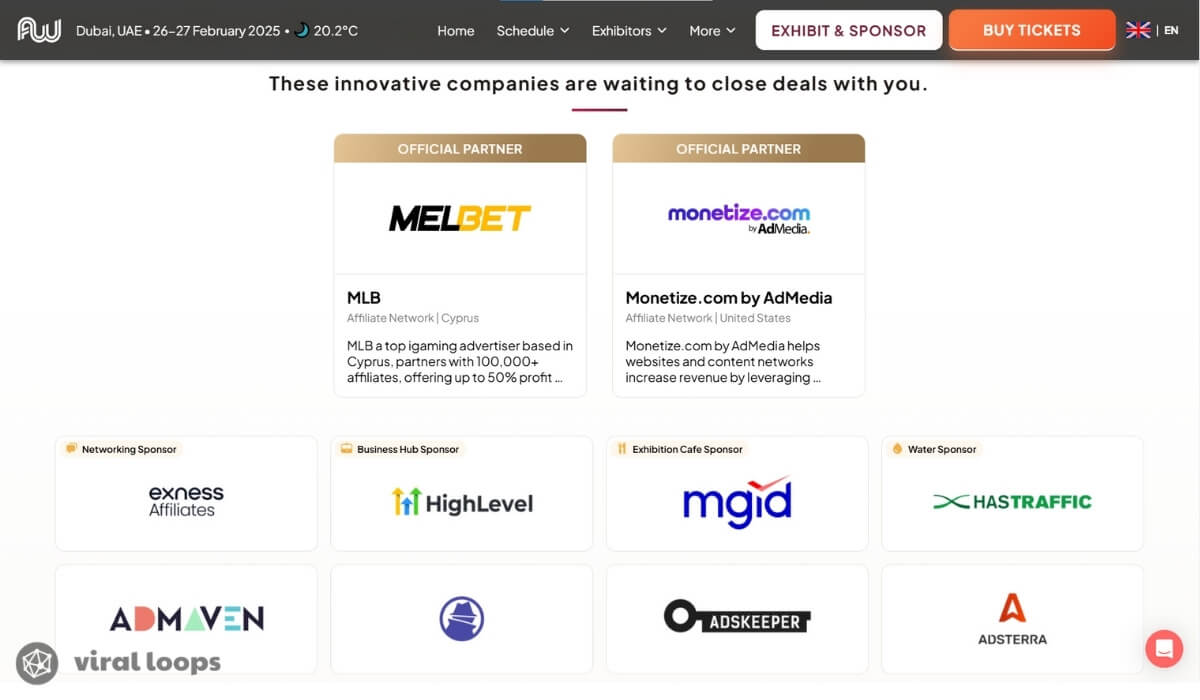
- Professional forum monitoring: People speak honestly about their challenges in professional communities. Set up alerts for industry-specific keywords and pain points. Track recurring themes and frustrations that your product could solve.
- Customer support analysis: Your support tickets tell stories about user struggles and expectations. Look for patterns in feature requests and common workarounds. These insights guide your product development priorities.
Building a Customer-Centric Culture
Your product alone won’t generate lasting word-of-mouth buzz. The magic happens when exceptional service amplifies your solution’s value. People remember – and talk about – how your team made them feel.
Let’s focus on empowering your team to create those memorable moments. Your employees need the right tools and authority to exceed expectations.
Employee empowerment essentials:
- Decision-making authority: Trust your team to make customer-focused decisions without endless approvals. Give them specific budgets for solving customer problems creatively. Celebrate when they take smart risks to delight customers.
- Product and industry training: Knowledge breeds confidence in customer interactions. Create comprehensive training programs that cover both technical details and industry context. Update training materials based on real customer interactions and feedback.
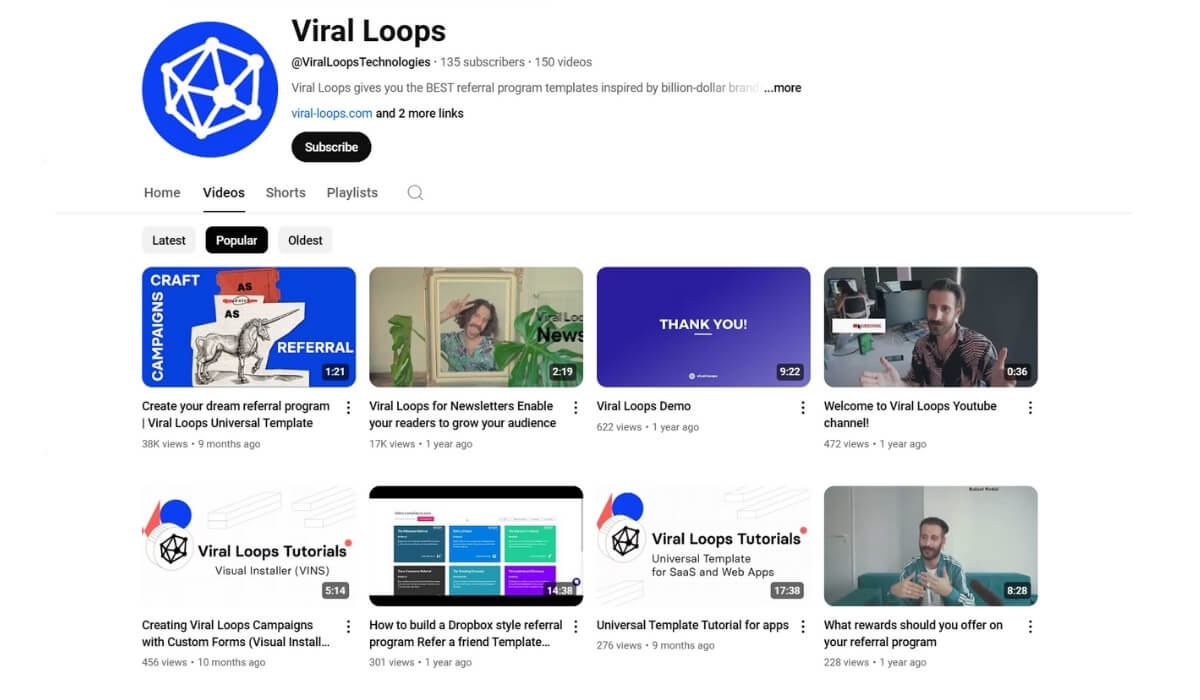
Creating memorable interactions:
- Proactive communication: Don’t wait for customers to ask about their project status. Send updates before they wonder what’s happening. This habit makes support tickets less frequent and helps build trust.
- Personal touches: Keep track of details from past conversations and bring them up naturally in future talks. Send personal notes after reaching major goals. These small acts often make customers talk positively about your business to others.
Implementing feedback systems:
- Direct channels to leadership: Make clear ways for customer feedback to reach the people in charge. Hold regular meetings to look at what customers say and suggest. Let customers who give helpful feedback know how you’re using their ideas.
- Quick response protocols: Build ways to respond fast when customers make suggestions or raise concerns. Thank customers personally when they share their thoughts. Show them how their input helps make your product better.
Pro tip: Begin with one project from each group. Make it work well before adding more. Doing a few things very well is better than doing many things just okay.
The best things people say about your company come from doing excellent work.
Choose what you want to focus on, keep doing it well, and watch as people naturally start talking about your business.
Creating Compelling B2B Content
Content drives conversations about your business when dealing with other companies.
But not just any content works. Other businesses don’t share basic blog posts or general reports. They share insights that make them look knowledgeable to their peers.
They pass along research that helps their coworkers fix urgent problems.
Let’s look at how to create content that your audience will want to share, mention, and talk about with other professionals.
Content Strategy Development
Want to make customers stay with you longer? Your content needs to do more than just exist on social media – it must fix real problems for the people you want to reach. Let’s plan this carefully.
Don’t use filler content. Instead, share insights that help your happy customers look smart when talking to their peers. When you give real value, they’ll naturally say good things about your brand. This creates trust with others who might want to work with you.
While working with popular industry figures can help, your best content often comes from real success stories.
Write down the problems, solutions, and actual wins. Show exactly how you turned difficult situations into success stories. Case studies like these can help:
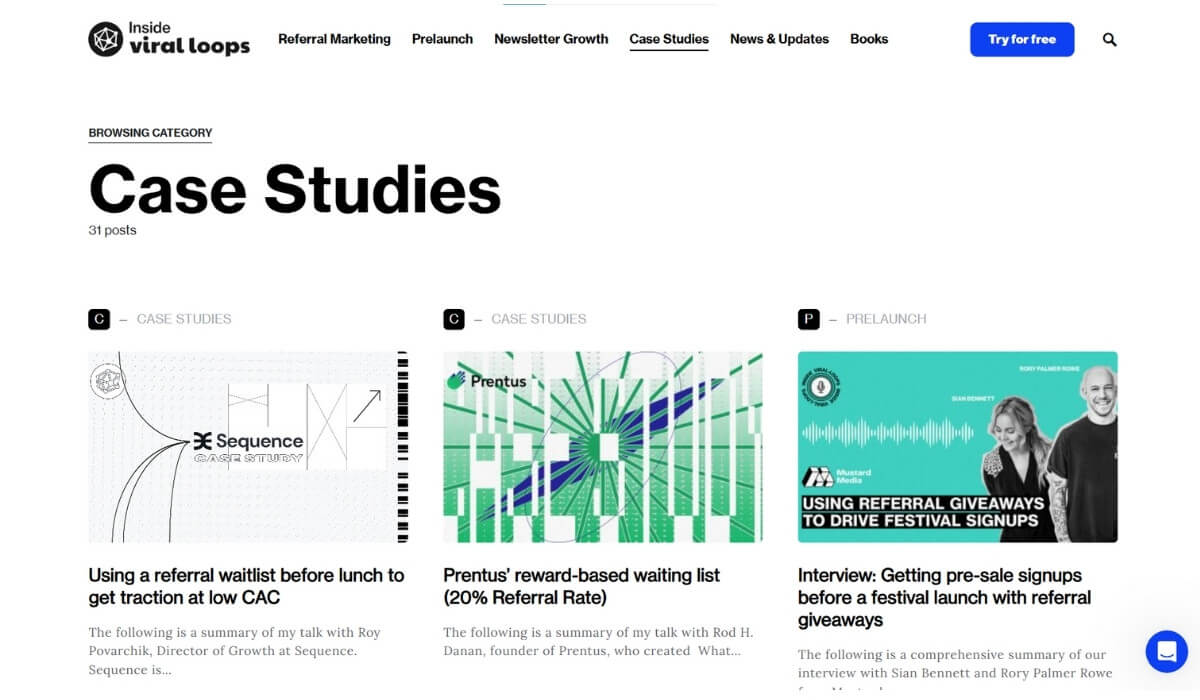
Work together with experts in your field who bring new ideas. This helps in two ways: it makes your business look more trustworthy, and it creates content your audience wants to share. When respected people in your industry talk about your solutions, others pay attention.
Remember: busy professionals don’t share basic how-to guides. They share insights that make them successful in their own companies. Make your content worth their time, and they’ll want to share it.
Work together with experts in your field who bring new ideas. When respected people in your industry talk about your solutions, others pay attention. Share on XContent Distribution
Your marketing plan needs more than just good content – it needs smart ways to reach people.
Want potential customers to notice you? Find where your target audience spends their time, and adjust your content to fit each platform.
When it comes to social networks for B2B companies, LinkedIn is the best place to connect, so make sure you establish a presence there.
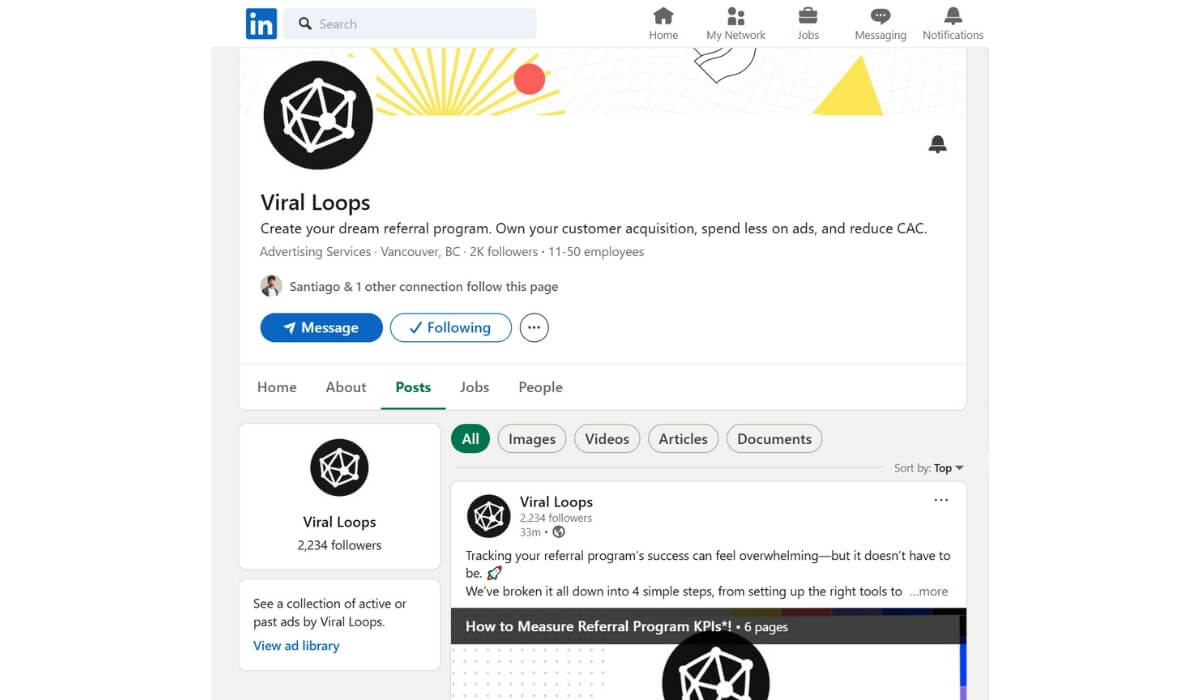
Smart promotion isn’t about getting famous people to endorse you. It’s about showing customer success stories to the right people. Help your team share your message with presentations and short posts that keep conversations going.
Work with other businesses that have the same target audience as you. These partnerships help you show what you know at events and meetings.
When professionals come together looking for solutions, your content should be ready to help answer their important questions. The best way to spread your message is to put it where your audience already looks for answers.
Use professional networks, industry magazines, and email newsletters to reach more people. Good content spreads naturally when you put it in the right places.
Building Professional Communities
People naturally talk about good products and services in active communities where professionals share ideas and solutions. Your job? Make spaces where meaningful talks happen naturally.
When you help build real connections between people in your industry, they see your brand as part of their valuable network – not just another company trying to sell something.
Let’s explore how to build and support communities that naturally get people to recommend your business. The key is making professional relationships better, not just collecting contact information.
Network Development
Great professional communities start with places where people can gather with a purpose. Here’s how to build them well:
Industry Forum Creation
- Make your forum focus on real problems that your audience faces every day. Create spaces where people can talk about current industry problems and new ways to solve them.
- Create special areas where members can share their problems and ask others for solutions. These talks often lead to helpful insights that can benefit everyone in the community.
- Watch over the talks and guide them when needed, but don’t be too controlling. Help when necessary, but let the community develop its own way of talking.
Event Hosting Strategies
- Use both online and in-person events: Different types of events work better for different needs and schedules. Online events are easy to join, while meeting in person helps build stronger relationships.
- Create workshops where people can practice what they learn: Give people skills they can use right away in their work. The best workshops get people talking even after they end.
- Bring in experts for focused talks: Invite industry experts to lead specific discussions. These sessions often get people talking and sharing the most.
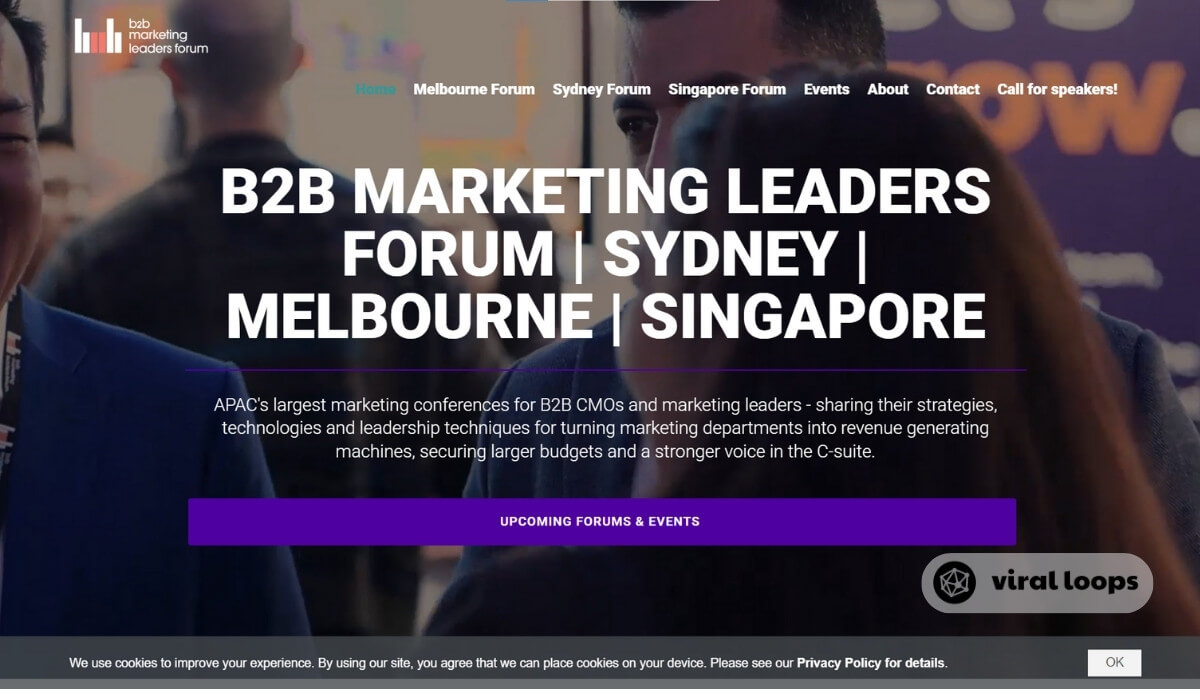
Online Presence
To succeed in online communities, you need a good plan. Here’s what works:
Platform Selection
- Choose your platforms carefully. Your audience probably already meets somewhere online. Find these places and join the conversation there.
- Try out different ways to interact. Each platform has different tools for people to talk to each other. Pick the ones that match how your community likes to communicate.
Value Addition
- Share content that people can’t find anywhere else: Give members research, insights, or resources that are special to your community. Make your community the place people go to first when they need important industry information.
- Give members special benefits: Let members try new features first or get special invites to events. These extra benefits encourage people to take part more often.
Remember: Strong communities naturally get people talking when members find real value in connecting with others in their field. Focus on helping people make meaningful connections, and the conversations will happen independently.
Employee Advocacy Program
Did you know your employees could be your best promoters? They know your product very well, understand your industry, and often know many other professionals.
Here’s how to turn their natural excitement into real advocacy:
- Internal Communication Plans: Keep your team updated and excited about what’s happening in the company. Share stories about success, product updates, and industry wins often. Your employees can only talk about things they know about – give them good stories to share.
- Training and Resources: Give your team the knowledge they need to talk confidently about your solutions. Provide content they can easily share, main points to discuss, and clear rules to follow. Real advocacy can’t be scripted, but you can support it with good resources.
- Recognition Systems: Celebrate team members who get people talking about your brand in meaningful ways. Share their success stories in team meetings. Create rewards that encourage real engagement, not just sharing without thinking.
- Social Media Rules: Help your team share professionally while still feeling free to be themselves. Set clear boundaries that protect both the company and the employees. Encourage user-generated content that echoes real voices instead of corporate language.
- Performance Tracking: Watch how well employee advocacy works without making it feel like just a business task. Keep track of engagement numbers, new leads, and how good the conversations are. Use what you learn to make your program better and celebrate what works well.
Measuring Word Of Mouth Marketing Impact
Now that you’ve built a solid word-of-mouth strategy, you need to ask yourself: how do you know it’s working?
While authentic conversations can’t be controlled, they can be measured. The right metrics help you understand what sparks natural recommendations and where to focus your efforts.
Let’s dive into the key metrics that matter and how to optimize your word-of-mouth performance. Good measurement isn’t about controlling the conversation but understanding what resonates with your audience.
Key Metrics
- Referral Tracking Tools. These track every recommendation path through your business. Set up unique referral codes for different channels and advocates. Monitor which sources generate the highest-quality leads and fastest conversions. The data tells you where to invest more resources.
![]()
- Social Listening Tools. Monitor brand mentions across social platforms and industry forums. Pay attention to conversation context and sentiment, not just mention counts. Track which topics and features generate the most positive discussions. Identify the channels where your audience naturally talks shop.
- Sentiment Analysis. Measure the emotional tone of conversations about your brand. Look for patterns in positive and negative feedback. Identify which aspects of your service trigger the strongest positive reactions. The emotional context often matters more than volume of mentions.
- Customer Feedback Metrics. Collect structured feedback through surveys and interviews. Ask specifically about likelihood to recommend and why. Track Net Promoter Score trends over time. Create feedback loops that inform product and service improvements.
Optimization Strategies
- Data-Driven Improvements. Use metrics to identify what triggers natural recommendations. Focus resources on the experiences that generate the most positive word-of-mouth. Refine your approach based on actual customer behavior and feedback. Let data guide your strategy adjustments.
- Testing Methodologies. Run controlled experiments with different approaches to customer experience. Test various referral incentives and reward structures. Compare the effectiveness of different community-building initiatives. Measure the impact of changes on recommendation rates.
- Program Refinement. Based on results, continuously adjust your word-of-mouth strategy. Drop what isn’t working and double down on successful elements. Stay flexible and responsive to changing customer preferences. Keep testing new approaches while maintaining what works.
- Scale-up Strategies. Start with small pilots and scale what proves effective. Build systems that can handle increasing referral volume. Create processes that maintain quality as you grow. Focus on sustainable growth rather than quick spikes.
The numbers tell important stories about your word-of-mouth marketing success. Track what matters, analyze the patterns, and adjust your strategy accordingly. Remember that metrics inform, not replace, your focus on creating genuinely remarkable experiences.
Amplify Your B2B Word-of-Mouth with Viral Loops
Looking to turn organic word of mouth into a measurable growth engine? Your mouth marketing strategy just got easier with Viral Loops – a platform that turns happy clients into active brand advocates.
Every positive word from a satisfied client should lead to new opportunities. That’s why Viral Loops created specialized B2B templates that make your referral program both powerful and painless, especially its Universal Referral Template.
Whether you’re selling software or services, these templates keep people talking about your brand naturally.
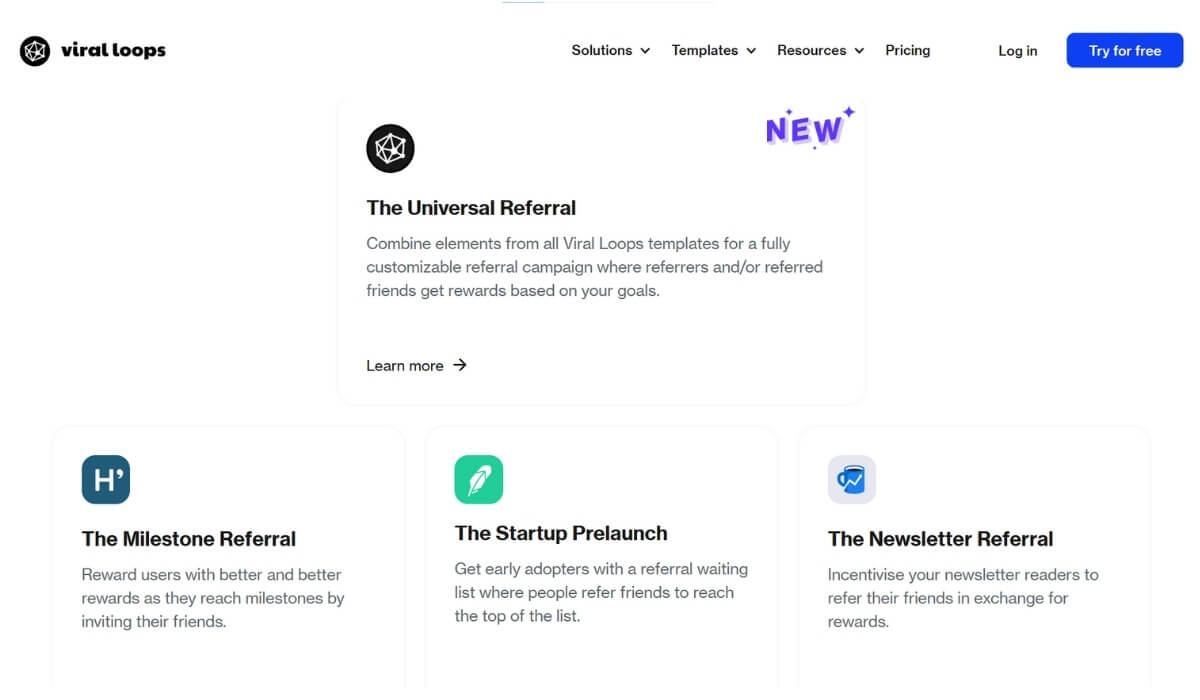
This is a referral tracker whose real-time dashboard lets you track which introductions drive the most value and how to best reward customers for their advocacy. You’ll spot trends in word-of-mouth spread and optimize your incentives for maximum impact.
The best part? While your clients enjoy a seamless referral experience, you get clear insights into your program’s performance. No more spreadsheet headaches – just automated generation of unique referral codes that lets you focus on building relationships that matter.
Ready to transform casual recommendations into a systematic engine for growth? Viral Loops makes it happen. Book a free demo and see for yourself.
Common Challenges and Solutions
Hit a roadblock with your structured referral program? You’re not alone. Here’s how successful companies keep people talking about their brand, even when the going gets tough.
First, let’s address authenticity.
Nobody wants their referral program to feel like a late-night sales pitch. Focus on delivering experiences so remarkable that customers naturally share valuable insights with their peers through their own channels.
Growing pains?
You can’t personally charm every client anymore, but your social media engagement can still feel personal. Create scalable systems that maintain that human touch. Train your team to spot and amplify authentic customer celebrations.
Consistency matters.
When different team members handle your word-of-mouth marketing initiatives differently, the message gets muddled. Create clear guidelines that everyone follows – like a well-guarded recipe for success.
Watch out for referral fatigue. Even the most exciting program needs fresh energy.
Keep your advocates engaged with new incentives and spotlight their success stories. After all, enthusiastic supporters deserve to feel like the stars they are.
Examples of B2B Companies That Used Word-of-Mouth Strategy
Want to know how some B2B companies turn their customers into their biggest fans? Let’s peek behind the curtain of three companies that nailed it.
1. Slack
Ever wonder how Slack became the go-to communication platform for businesses worldwide? Slack didn’t just solve a problem – they redefined how teams communicate.
Their collaboration platform goes beyond basic messaging, addressing complex business communication needs that companies didn’t even know they had.
Their secret weapon? Customer service that consistently exceeds expectations.
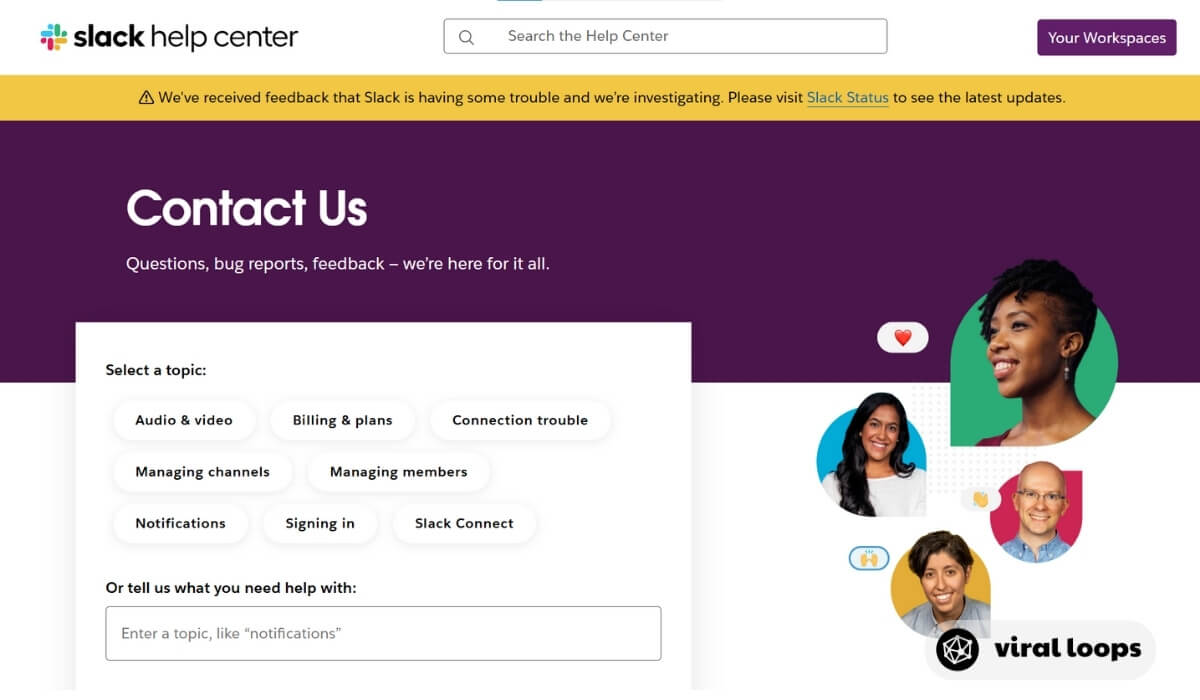
When issues arise, Slack’s support team responds with both speed and personality – a rare combination in B2B.
These interactions became so memorable that users frequently shared screenshots on social media, creating waves of organic recommendations across professional networks.
2. Dropbox
Dropbox revolutionized how businesses handle file storage and sharing with a brilliantly simple referral strategy: share Dropbox, get more storage.
This approach resonated perfectly with B2B dynamics. When IT managers and team leaders needed to collaborate with external partners, Dropbox became the natural choice.
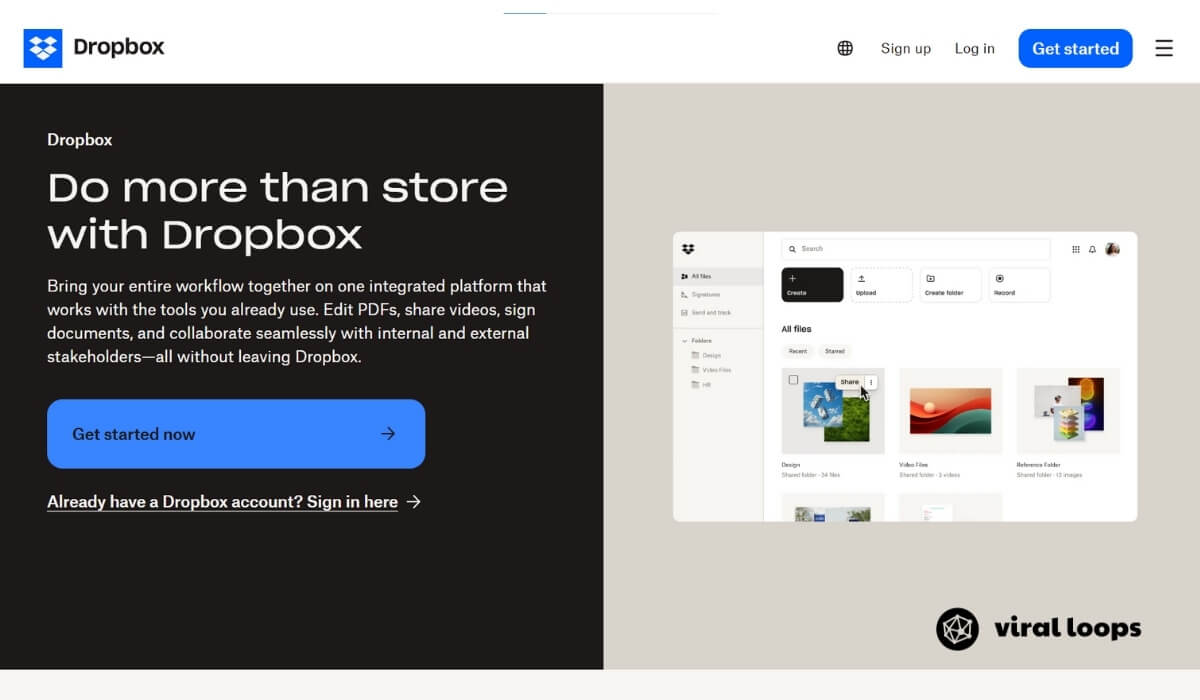
Every shared folder essentially functioned as a live product demo. External partners experienced Dropbox’s seamless collaboration features firsthand, leading to organic adoption across entire organizations.
The professional features, secure file-sharing, and team management tools made it an easy recommendation for business users.
3. HubSpot
HubSpot took a different approach to word-of-mouth by establishing itself as the ultimate educational resource for marketing professionals.
Their all-in-one marketing, sales, and CRM platform gained traction through HubSpot Academy – a masterclass in educational marketing.
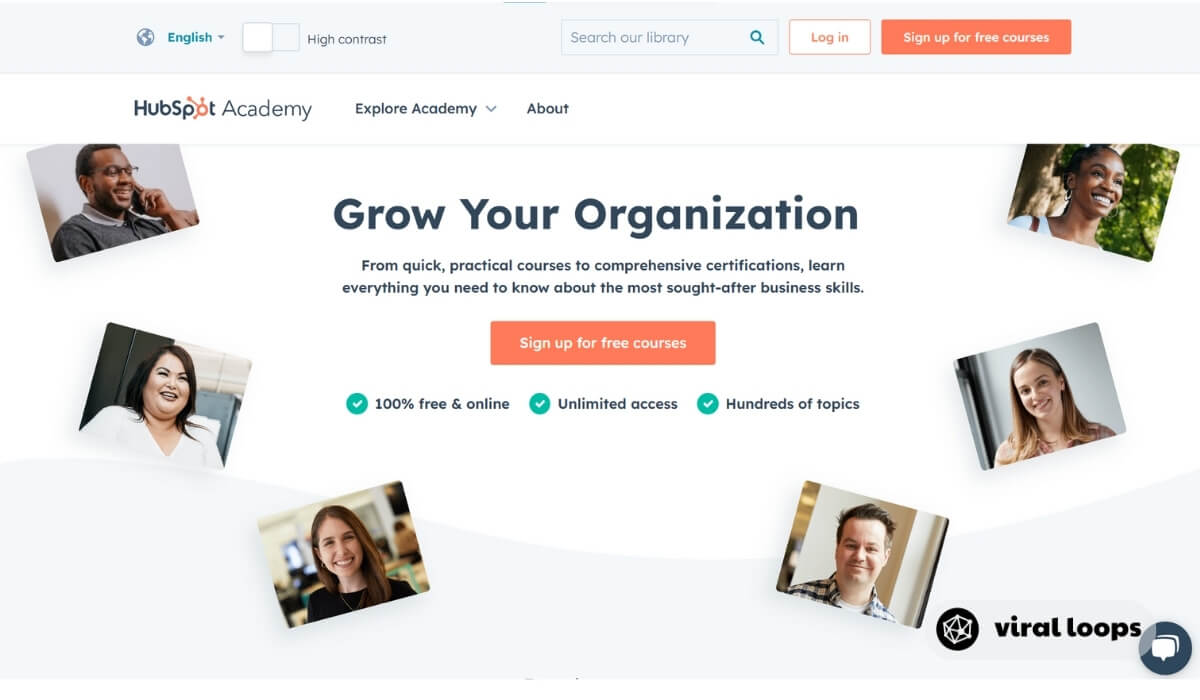
The academy offers free certifications that advance careers. Marketing professionals proudly display these credentials on LinkedIn, advocating for HubSpot’s tools in their organizations.
As certified professionals change jobs, they bring their HubSpot expertise – and recommendations – to new companies.
All three companies share one crucial insight: they created genuine reasons for professionals to champion their products. They focused first on delivering exceptional value, then made it effortless for satisfied customers to spread the word throughout their professional networks.
Wrapping Up
Natural word-of-mouth stands unrivaled in B2B marketing.
Your satisfied clients share their success stories at industry conferences, board meetings, and across their professional networks – driving more qualified leads than any paid campaign could achieve.
While great service and genuine relationships form the foundation, tools like Viral Loops help you systematically amplify these natural recommendations. The platform transforms organic praise into measurable, scalable referral programs while preserving the authenticity that makes B2B word-of-mouth so powerful.
Ready to transform your satisfied B2B clients into powerful brand advocates? Sign up for Viral Loops today and turn those natural recommendations into your most effective growth engine.
